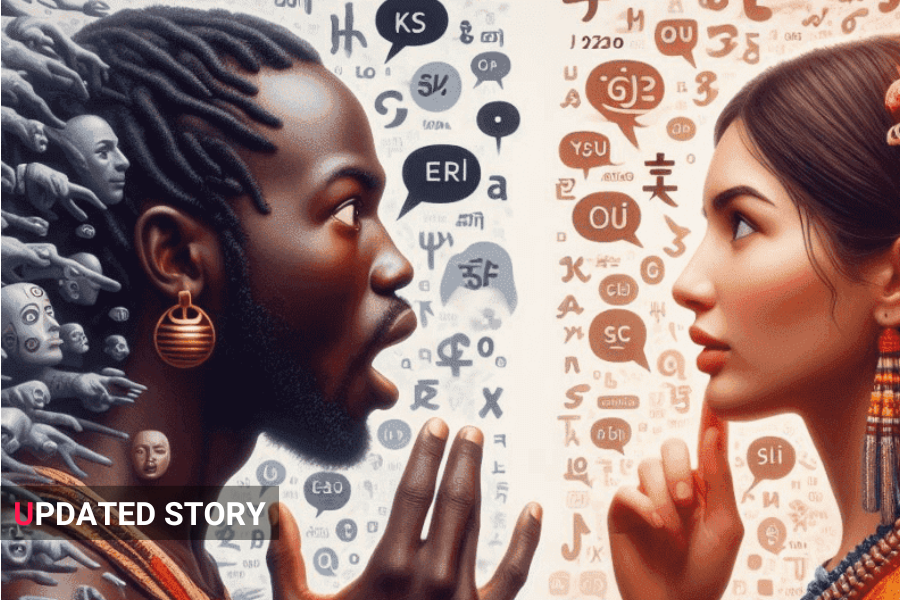The Role of Oprekladač in Global Communication: A Detailed Case Study
In an increasingly connected world, effective communication across different languages has become more essential than ever before. While most people are familiar with the concept of translation, the work of an “oprekladač” (the Slovak word for translator) involves more than just swapping words from one language to another. It’s about understanding context, cultural differences, and how to convey meaning accurately. In this blog post, we’ll take a closer look at the role of an “oprekladač” by diving into a real-life case study that highlights their impact on various industries and the difficulties they encounter on a daily basis at work.
Understanding the Role of Oprekladač
The term “oprekladač” translates to “translator” in English, and its job description can vary greatly depending on the industry, language pairs involved, and type of content being translated. An “oprekladač” could be working with written text, translating books, websites, and technical manuals, or they could be facilitating verbal communication through interpretation.
The most important thing to understand about an “oprekladač” is that their job is not just about finding equivalent words in different languages. They need to understand the context, tone, and intent behind the message in the original language to ensure that the translation is accurate and culturally appropriate.
Whether working with a human or machine translator, the goal of the “oprekladač” is to maintain the message’s integrity and provide a clear, understandable version in the target language.
Case Study: Translation in International Business
For the purpose of this post, let’s dive into a case study of a major international company that had to rely heavily on the work of “oprekladač” to expand its reach into new markets. This company is known for its high-end consumer electronics and has long been a leader in innovation. In order to tap into new markets in Europe and Asia, the company needed to ensure that its marketing materials, product manuals, and customer service communications were available in several languages, including Slovak, Russian, Japanese, and French.
The Challenge
The primary challenge this company faced was the sheer volume of material that needed to be translated while ensuring that the translated content maintained the same brand voice and message. For example, their product manuals had to be written in a way that was technically accurate but also easy to understand for consumers who might not have advanced knowledge of electronics.
Additionally, there was a need to translate marketing materials that would resonate with local audiences in different countries. While the technical manuals could be straightforward, the marketing content had to take into account cultural preferences and regional variations in language. The company’s marketing team wanted to ensure that the slogans, product names, and advertising campaigns didn’t get lost in translation, but instead, were adapted to connect with each target market.
This is where the role of the “oprekladač” became absolutely critical. To make sure the company’s message was consistent across all languages, they needed translators who understood both the technical language of electronics and the nuances of each target language and culture.
The Solution: A Hybrid Approach
The company opted for a hybrid approach, blending human translators with machine translation tools. Here’s how they handled it:
Machine Translation for Speed: For some simpler, more straightforward content such as product manuals and user guides, the company used machine translation tools. These tools, like Google Translate and Microsoft Translator, could process large volumes of text in a short amount of time. However, machine translation isn’t perfect. It can struggle with idiomatic phrases and context, especially in marketing materials.
Human Translation for Accuracy: To ensure accuracy and cultural relevance, the company employed professional human translators for more complex and creative content. These included advertisements, social media posts, and website content. The human translators understood the need to adapt the tone of the message to suit local tastes while keeping the original intent intact.
Post-Editing of Machine Translations: In addition to using human translators for creative content, the company also decided to use human translators to post-edit machine translations. Machine-generated translations could serve as a base, but a skilled translator would then go through the content and make adjustments to ensure accuracy and cultural appropriateness.
This hybrid method allowed the company to maintain consistency in its messaging while also speeding up the process for large-scale translation projects.
The Impact of Oprekladač on the Company’s Success
The work of the “oprekladač” helped the company achieve its goals of global expansion while maintaining brand integrity. Here’s a breakdown of how translation impacted the company’s success:
1. Expanding Market Reach
By translating their content into multiple languages, the company was able to effectively communicate with customers in various regions. This allowed them to expand their market reach in Europe and Asia. The localized marketing campaigns created a stronger connection with local consumers, leading to higher engagement and sales in those regions.
For example, a product launch in Japan would have been difficult without the cultural adaptation that a skilled “oprekladač” provided. In Japan, the company’s marketing team worked closely with a native Japanese translator to ensure that the product’s messaging was in line with local tastes and customs. The result? A successful product launch that far exceeded initial projections.
2. Enhancing Customer Satisfaction
Translation also had a direct impact on customer satisfaction. Providing product manuals and customer service resources in local languages made it easier for customers to understand how to use the products and solve any issues they encountered. This was especially important for a company that sells highly technical products.
For example, when customers in Slovakia experienced issues with their electronics, they could access Slovak-language troubleshooting guides and customer service support. This made the customer experience smoother and ensured that issues were resolved quickly, reducing the number of complaints and returns.
3. Legal and Regulatory Compliance
One often overlooked aspect of translation is the need for accuracy when it comes to legal documents. In many countries, businesses are required to provide certain product information in the local language to comply with regulations. The company relied on professional translators to ensure that their legal documents, including product disclaimers and terms of service, were fully compliant with local laws.
In the European Union, for example, many countries require specific information to be provided in the native language of the consumer. By working with qualified “oprekladač,” the company ensured that their legal documents met these regulatory standards and avoided costly fines or legal issues.
4. Cost Efficiency
Although hiring professional human translators is more expensive than relying solely on machine translation, the company found that investing in skilled translators actually saved them money in the long run. Properly translated content reduced the need for costly revisions and fixes down the line. Additionally, the company avoided the potential costs of miscommunication, legal issues, or failed marketing campaigns due to poor translations.
Machine translation was particularly useful for handling routine content, such as emails or general communication, where the need for accuracy and context wasn’t as critical. However, when it came to complex materials, the company’s investment in human translators paid off in terms of overall quality and customer satisfaction.
Challenges Faced by Oprekladač in This Case Study
Despite the positive results, there were several challenges that the translators had to overcome during this project:
Managing Multiple Language Pairs: Translating content into multiple languages is always a challenge. The company needed to ensure consistency across several different languages, each with its own grammar rules, idiomatic expressions, and cultural references.
Handling Technical Terminology: Translating technical content can be difficult because of the specialized vocabulary used in fields like electronics. Ensuring that the technical terms were translated accurately while also making the content readable for the average consumer was a delicate balancing act.
Adapting to Cultural Differences: Cultural differences can sometimes make translation more complicated. What works in one culture may not resonate with another. The translators had to ensure that each piece of content was adapted to fit the local market, taking into account differences in humor, preferences, and even color symbolism.
Tight Deadlines: In today’s fast-paced world, businesses are often under pressure to meet tight deadlines. This was especially true for this company as they wanted to launch their products in multiple countries simultaneously. The translators had to work efficiently to meet these deadlines without compromising the quality of the translations.
The Future of Oprekladač: Adapting to Changing Needs
As the world becomes more interconnected, the role of the “oprekladač” will continue to evolve. Companies will increasingly rely on both human translators and machine translation tools to meet the demands of global communication. The future will likely see more integration between AI-powered tools and human expertise, allowing businesses to scale their translation efforts more efficiently.
In addition, the growing trend of remote work and international collaboration will create even more opportunities for translators. Companies will need to communicate effectively across borders, and skilled “oprekladač” will continue to play a key role in making that happen.
Also Read: Brad Dummer Obituary: A Tribute to His Lifelong Service to Pecatonica
Conclusion
The role of the “oprekladač” (translator) is far more complex and impactful than simply converting words from one language to another. As demonstrated in this case study, translators play a crucial role in ensuring that companies can effectively communicate across borders, maintain brand consistency, and resonate with diverse cultural audiences. Whether working with technical documents, marketing materials, or customer service resources, the work of an “oprekladač” has a direct impact on a company’s success in global markets.
The hybrid approach of combining human expertise with machine translation tools proves to be an effective strategy for handling the volume and complexity of modern translation demands. As businesses continue to expand their international reach, the expertise of skilled “oprekladač” will remain essential in overcoming the challenges of multilingual communication. In a world where cultural nuances and accuracy are key to success, the role of a translator is invaluable in bridging gaps and ensuring messages are both understood and appreciated worldwide.
Stay informed with the news and updates on Updated Story THANK YOU!






